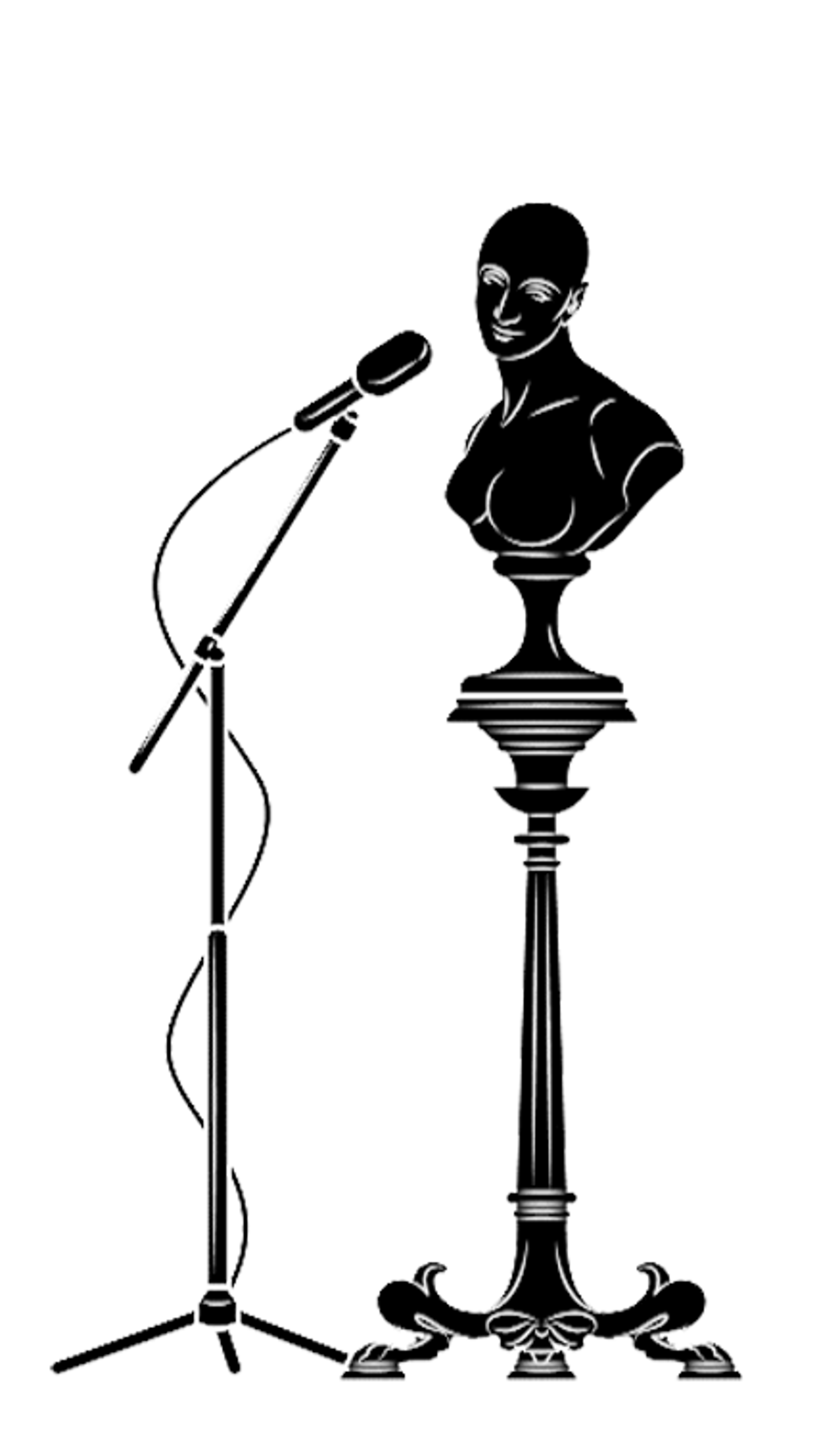
Sondos Azzam’s multi-sensory dining experience, Nāranga, explores the collective memory of the Jaffa orange through a five-course meal. With each dish, the dinner considers one of the fruit’s sensorial layers and recontextualizes it. It all begins with peeling an orange wrapped in wax paper, onto which excerpts from Ghassan Kanafani’s “The Land of the Sad Oranges” are imprinted. The project thus finds an anchor in history: Jaffa’s role as a hub for orange production until 1948, the confiscation of Palestinian-owrned orange groves during the Nakba, and the and the fruit’s later subsumption into the Israeli national identity. Questions of land ownership, labour tropes, and the fruit’s emotional significance emerge—appointing the perspective of the Palestinian people back onto the fruit. As a member of Dubai’s Palestinian diaspora, Sondos Azzam reveals the orange as more than just an ingredient, but a symbol of a stolen land, and of its potential recovery.

A storybook accompanies Nāranga that explains what the dining experience might offer, emotionally and exegetically, through Azzam’s autobiographical perspective. The narrative illustrates the significance of reappropriating stolen symbols like the Jaffa orange, which, though significant to Palestinians due to its prominent cultivation during the 19th and 20th centuries, has, over time, been assimilated into the Israeli national identity.
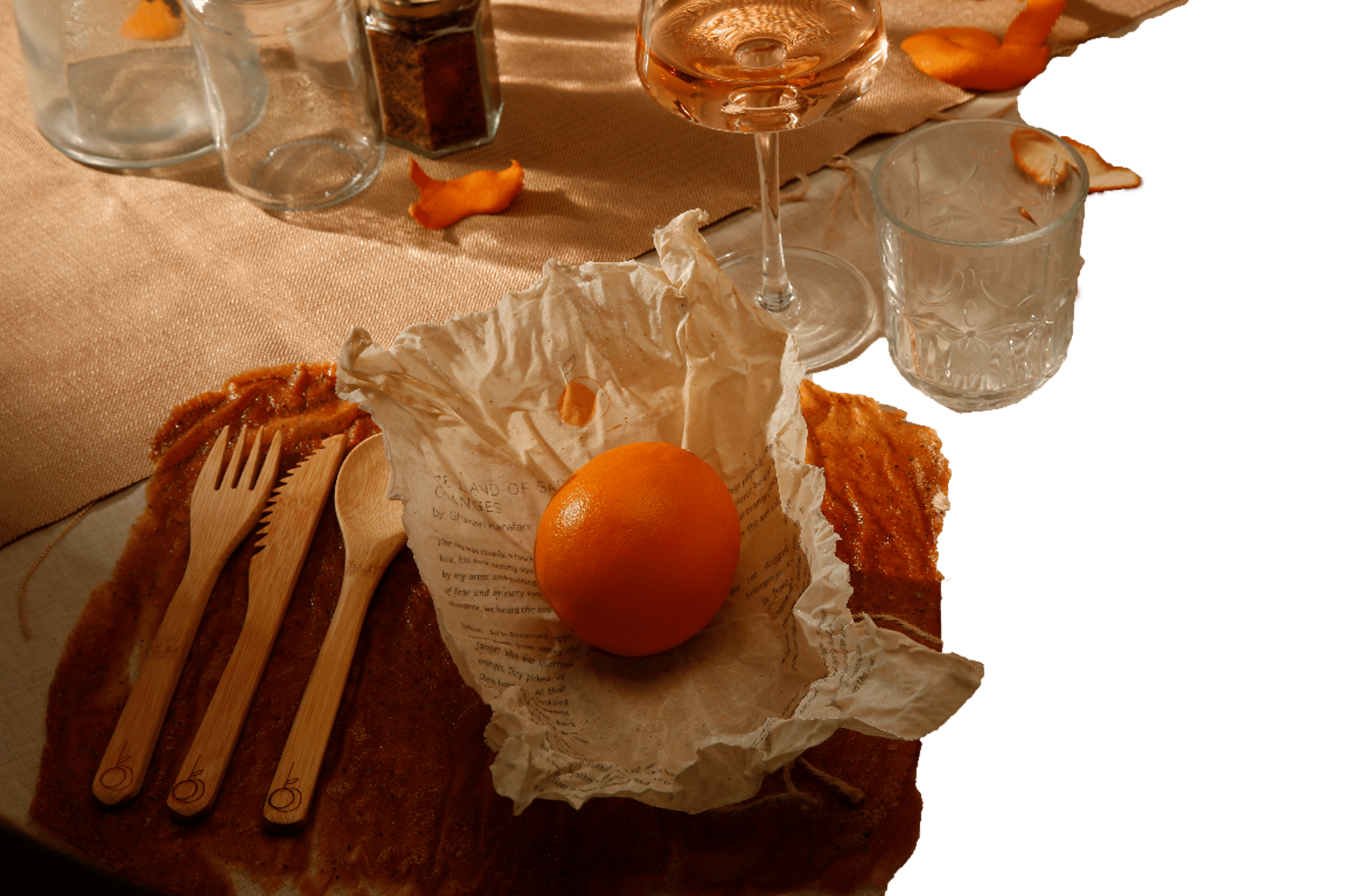
I sit on the train, clutching my belongings close to my chest. I’m nervous and unsure of myself, what to expect, but even stronger is the keen sense of curiosity I have felt ever since I had received the envelope in the mail a few weeks ago. I had sifted through the usual piles of bills and uninspiring menus and found a stiff, pale orange envelope hidden amongst the stacks. Curious, I slit it open, the faint smell of bitter orange wafting around me as I sat in my kitchen.“You are invited,” it said, going on to describe an afternoon celebrating the humble Yaffa orange, the heritage of Palestine. Unsure what to expect, I tossed the envelope aside, dismissing it as yet another of the many stuffy promotional events I was frequently invited to as a writer.
Later that night, tossing and turning, I went back to it to give it another read. I was Palestinian by ethnicity only—my parents had emigrated here after they had nowhere else to go and I had been born and raised far away from their home and with no connection to their culture. I felt very little for Palestine, apart from the sad, heavy, nostalgic stories my father and his brothers would sometimes tell when I was a child and they’d had too much wine, as I hid under the dining table, crouching, eavesdropping. However, something about this invitation held my attention – that persistent scent of orange that seemed to linger in my kitchen even after I had cooked, the cryptic message, the strange appeal to my unknown heritage. I RSVP-ed ‘yes’ that same night, my eyes bleary from lack of sleep, but the same keen sense of curiosity having taken hold of me.
Back on the train, I take a look at my surroundings, glancing out of the window at the countryside hurtling by. I close my eyes to calm my nerves and when I come to, the train has reached its last destination, where I was to alight. I walk from the station to the old orange orchard whose address is printed on the invitation, and heart racing, straight up the tree-lined path to a large stone structure covered in ivy. I stop to take in the strange sight—it looks to be a gazebo of sorts, made of four large, intricately carved stone archways, each rising to meet a glass roof. From the middle of the gazebo rises a huge orange tree, its branches clambering through a skylight and spreading up, out into the sky. The orchard surrounds the gazebo and stretches as far as the eye can see, with scores of old, wizened orange trees lining the horizon.
Under the shelter of the tree, there are two irregular oak tables in the shape of what I suspect are orange segments. Confused, I walk through one of the arches, ivy brushing past my face as I do, and see a flurry of activity—older women stood between the two tables, chopping onions, slicing bread, stirring thick, glossy sauces in pots. I walk towards the table closest to me, where a group of strangers sits, not speaking to one another. At a loss for what to do, I take the last empty seat at the table, exchanging uncertain smiles with the other guests. As soon as I take my seat, a group of waiters descends upon the table with glasses of orange wine for each of us. I take a sip of the wine to ease my nerves, but find it bitter and acidic. I put my glass down and take in the table in front of me—resting upon each leathery orange placemat is a small object wrapped in beeswax. I pick up the parcel closest to me and examine it, drinking in the scent of jojoba oil rubbing off on my fingers. The beeswax wrap has a small label, which instructs me to peel it and a matching one on the back which says ‘keep me’. Not being one to disobey instructions, I unwrap the parcel and an orange rolls out onto my lap. I pick it up and examine it, but it is wholly unremarkable—just a regular orange. Intrigued, I pick up the beeswax that the orange was wrapped in and notice faintly printed orange text on the inside. It is a story by someone named Ghassan Kanafani, not someone I have heard of. I read the story— it describes the role the Yaffa orange played in Palestinian resistance. I begin to nervously play with the orange, peeling it under the table with my fingers. The story is raw, emotional and tells a tale of sadness and loss. Overwhelmed and slightly ashamed at not having known the importance of the orange to Palestinian history, I wrap the orange and its peel back up in the beeswax, trying to hide it and my shame away, but the scent of the orange lingers on my fingers. I look up around me at my fellow guests to gauge their reaction, but they are all engrossed in lively and passionate conversation, which I felt as though I was perhaps not Palestinian enough to be a part of.
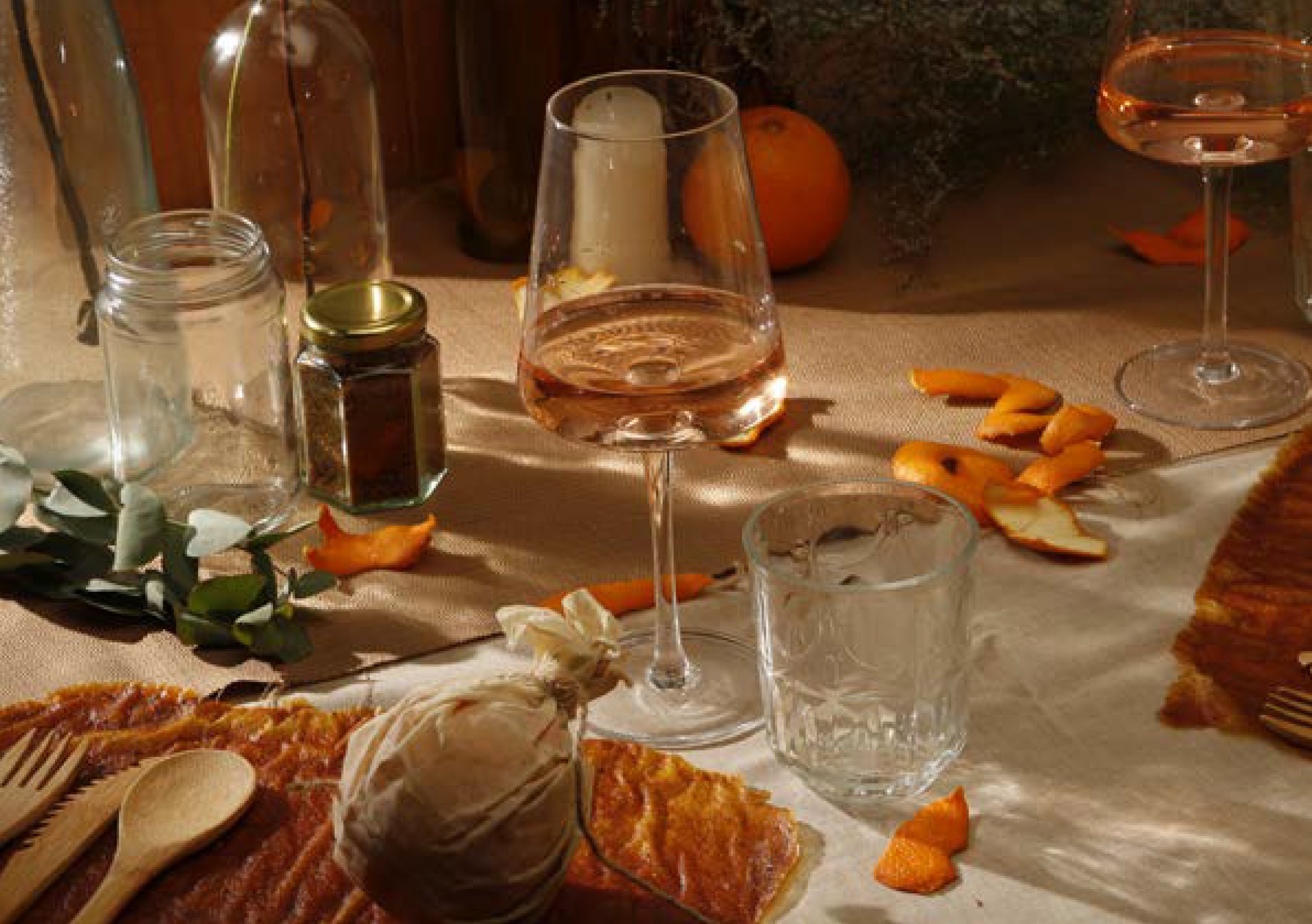
To my relief, the waiters bring out the first course, placing a dish gently in front of me. At first glance, it is a riot of color, a paper-thin stack of deep pink, orange and white. We are told that this is a beetroot, orange and goat’s cheese salad. I lift a bite to my mouth, savoring a burst of flavor. Each bite tastes different, alternatively sweet, tart and creamy, with the piercing taste of citrus tying the whole dish together. As I clear my plate, I sip the wine, which is made more palatable by the creamy tartness of the salad. Emboldened by the wine and the delicious first course, I strike up a conversation with the man next to me, a sharply dressed older gentleman with a strong Arab accent and a warm, genuine smile.
As our dishes are whisked away, I rest my hands on the leathery orange placemat. It’s rough but soft, firm, but yielding. As I lift it to my nose and inhale, I’m greeted by a waft of warm spices and bright orange. “It’s made of the orange peel, for we do not waste it,” the old man says, “and it represents how every aspect of the Yaffa orange is valuable, how every last morsel has given us hope for centuries.”
The second course is brought in, a bright and striking dish—the palate cleanser. It is an orange and thyme granita, we are told. I take a bite, wincing immediately from the cold ice, but once I get past the discomfort, I feel the taste and texture roll over my tongue, sweet because of the orange juice, but cut with the earthiness of the thyme. The granita is an entire experience, each hard sliver of ice yielding as soon as it hits the tongue, melting to become a beautiful, delicate refresher. Once I have scraped every last morsel of melting ice from the glass, I push it aside and turned to my neighbor, who is savoring his granita with a sense of dignified enjoyment. He continues to tell me the story of his youth in Palestine with fervent passion, reminding me of the stories my father and uncles told, taking me back to my hiding spot under the dinner table. Our voices join the buzz of the sounds of the bustling kitchen, creating a quiet harmony of sorts.
As our conversation progresses, our wine glasses are refilled, again and again, and the taste of the orange wine, slightly acidic at first, slowly starts to feel more comfortable on my tongue, its once-bitter notes yielding like honey. We begin to get so engrossed in the details of the man’s childhood home and the orange orchards surrounding his property that we almost don’t notice the main course being placed in front of us. I look upon it with slightly intoxicated eyes, immediately recognizing the piles of soft, tender chicken mixed with glistening purple onions, all resting on a bed of soft white Arabic bread. It’s musakhan, the national dish of Palestine, and my only real culinary connection to my Palestinian heritage. I lean down to inhale, expecting to be greeted by the mild scent of sumac and caramelized onions that was so familiar to me, but instead smell a sticky-sweet citrus instead. Confused, I look around me at my fellow guests, who were all experiencing similar reactions—musakhan was a national treasure of sorts, not to be tampered with. One of our waiters steps forward, explaining that this rendition of musakhan uses pomegranate molasses and orange to marinate the chicken, in an homage to how pervasive the Yaffa orange’s influence is in Palestinian culture.
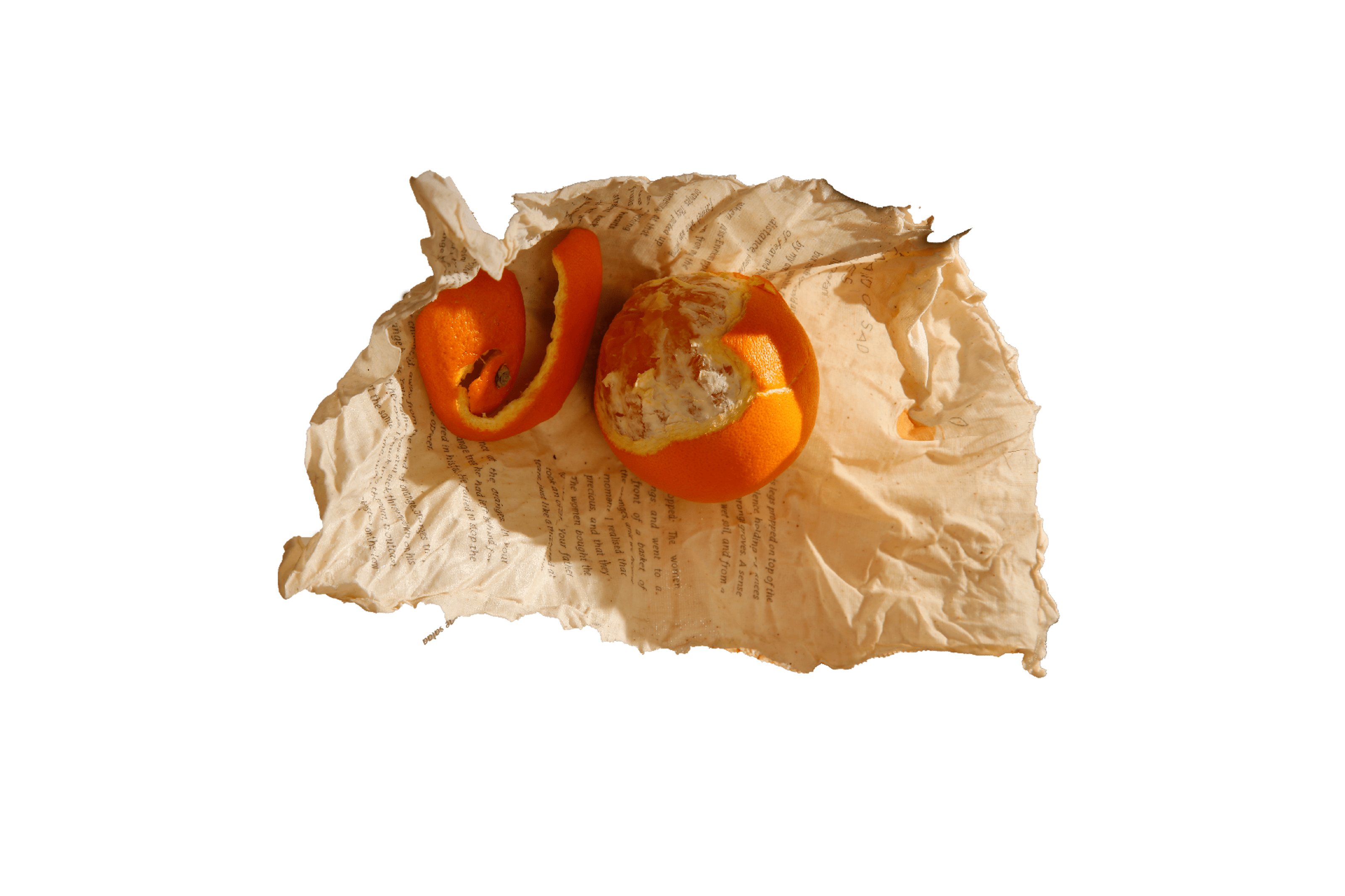
Hesitantly, I begin to work my way through the dish, tearing a piece of the bread and using it to mop up the sticky-sweet juice dripping from the shredded chicken. I progress to the onions, savoring the soft, slightly tart flavor, before trying a bite of the chicken. The chicken is tender, coated in a sticky glaze of honey and pomegranate molasses which cut sharply through the slightly fruity taste of the sumac. I lean back in my chair and chew, taking in my suddenly quieter surroundings—everyone hushed as they experience a classic dish made new.
As I sit in my chair, warm and flushed from the food and wine, and having lost my initial self-consciousness, I tune into other people’s conversations, listening as they share personal anecdotes of their childhoods, of their experiences as immigrants unable to return to their home. I still feel slightly out of place, but am drawn into the conversation by their warmth and the wine.
As our dessert is brought out to us, we are told that we will be served Yaffa cake as our final course. Confused, I crane my neck to look at the plates currently making their way to us, expecting a deconstructed version of the jaffa cake I had grown up eating in this country. To my surprise—and mild relief—what is placed in front of me is a small orangish-yellow cake, dripping in a thick glistening syrup. I immediately smell orange, cut through with the sweet smell of honey. I take a bite and am surprised to taste that the cake itself isn’t very sweet—this, my neighbor informs me, is because the cake is made from the bitter white skin of the orange.
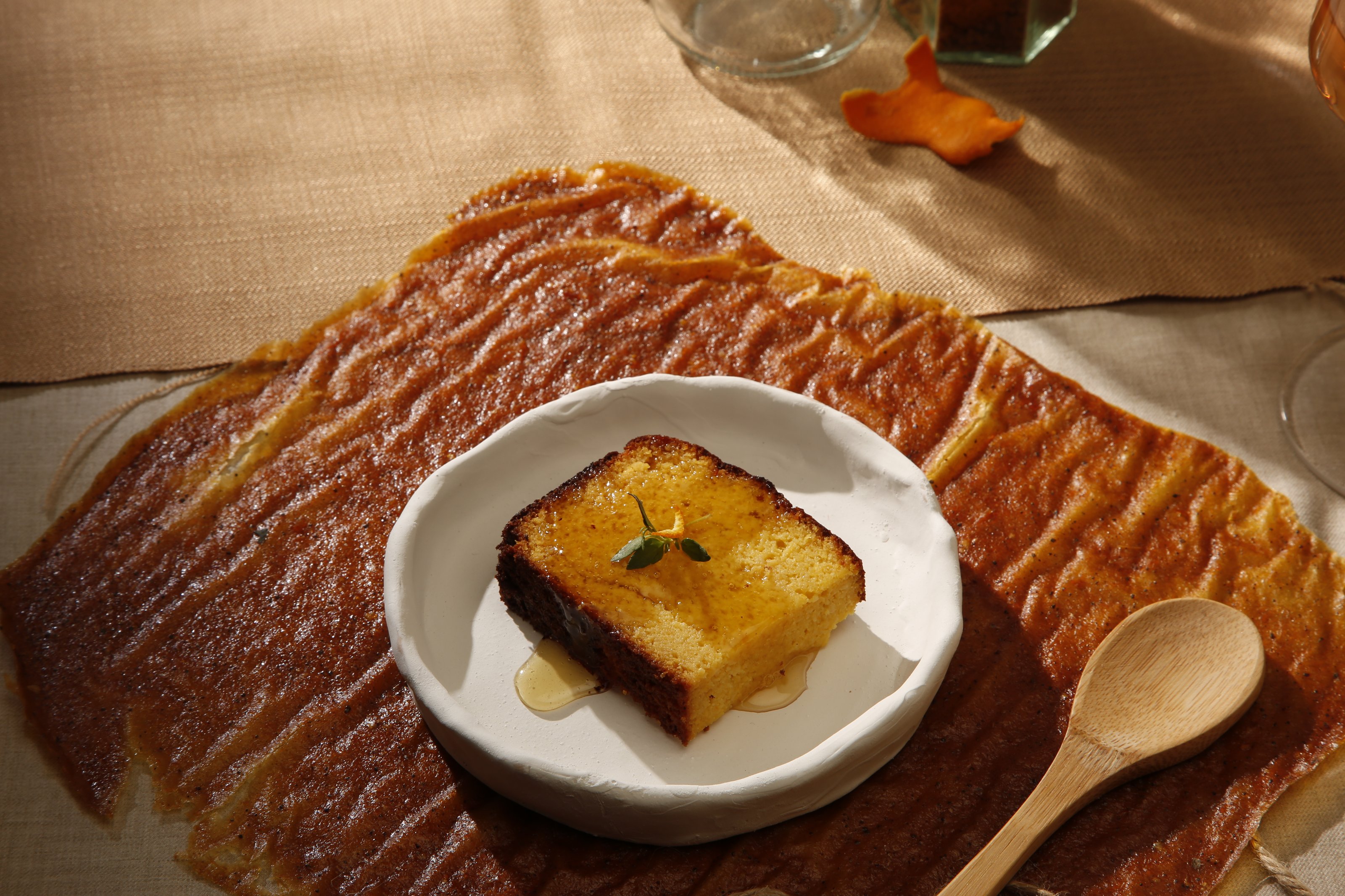
The cake is orange personified – moist, fragrant, and slightly bitter. Each bite feels almost overwhelmingly unique, sweet at times and savory at others, owing to the olive oil and polenta in its base. I note that while the rest of the experience has showcased different aspects of the orange, this cake is a culmination of sorts of the whole orange in its entirety. As we sit and converse over cake, the afternoon slips away from us, the sun beginning to set amongst the orange trees, lighting them with a lovely amber glow.
My elderly friend and I leave the table to walk amongst the trees, enjoying the delicate yet heady scent of the orange blossoms that hangs around us. He regales me with tales of his youth, of climbing trees not too dissimilar to these ones back in his hometown, of fighting, of running. Engrossed, I take it all in, wanting to remember these stories forever. As we walk back to the table, the sun setting behind us, we speak of hope and of the enduring spirit of the Palestinian culture, present here amongst us and brought to life by the orange, once a symbol of defeat, but now a beacon of hope to estranged individuals like me. Through small acts of resistance, the new generation, my companion explains, was working to reclaim symbols of their ancestors’ oppression.
We settle ourselves back in our chairs, the dishes having been cleared away. Each waiter places a small book in front of us, alongside our wrapped oranges. I flick through the book, realizing that it was a recipe book, allowing me a tangible connection into this world. I lift the wrapped orange to my nose and inhale, the beeswax falling to the table. I feel connected, as if I had been let into a world that I could previously only watch from the outside, and the key had been this humble orange. I clutch the orange in my hands and read Kanafani’s story again, the heady smell of the fruit mingling with the passionate words on the beeswax.

As the storybook posits, each dish, as well as the organic placemats and cutlery, introduces a different note or layer of the Jaffa orange, allowing it to be appreciated through the lens of memory and nostalgia—so idiosyncratic to taste and smell. Thus the orange becomes a carrier bag for stolen land; a cypher for a return to the past. Through the senses, Nāranga mediates the unattainable past and the potential future of the Palestinian people, urging for conversations surrounding the topic.
Sondos Azzam / Nāranga, 2021

